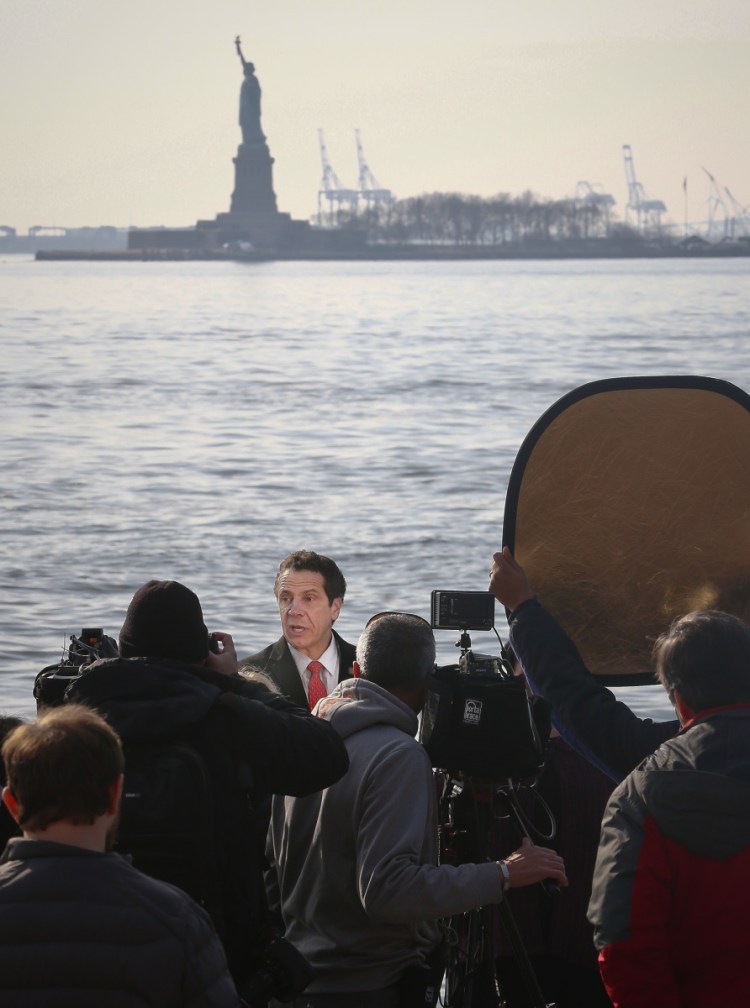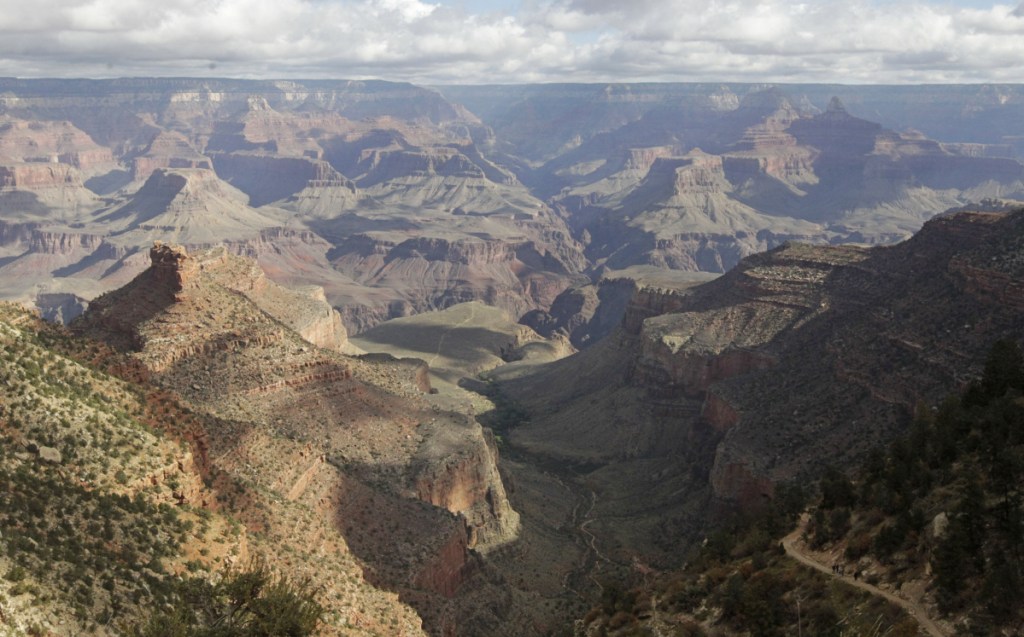From his office’s second-story window in Lower Manhattan, Stephen Briganti could see dozens of tourists “milling about” over the weekend, trying to understand why they could not travel to the Statue of Liberty or Ellis Island.
“This happens every time there’s a (government) shutdown,” said Briganti, president of the Statue of Liberty-Ellis Island Foundation. “People coming from abroad, and even those coming from other parts of the country, don’t realize the statue closes when the government shuts down.”
Now they won’t have to worry. On Sunday, Gov. Andrew Cuomo announced that Ellis Island and the Statue of Liberty would stay open on the state’s dime under an agreement struck with the Interior Department. Arizona has similarly said it will ensure the Grand Canyon remains open – whether the federal government reopens or not.
The government shutdown, entering its third day despite frantic negotiations late Sunday on Capitol Hill, has sent home federal workers needed to maintain beloved U.S. icons – cleaners at the Statue of Liberty, rangers patrolling Mount Rushmore, plow drivers who clear snowy roads leading to the Grand Canyon. Some states are trying to step into the void left by the federal government, eager to contrast their competence with Washington’s dysfunction.
“No matter what drama occurs back in Congress, we have a responsibility to make sure the shutdown doesn’t have an impact on Arizona’s economy or our children’s health care,” Gov. Doug Ducey said, noting that the state will fund its Children’s Health Insurance Program until Congress can break the logjam over it.
Governors have taken actions during previous shutdowns, with Cuomo also keeping the Statue of Liberty and Ellis Island open in 2013. For blue states such as New York that have already vowed to shield residents from the new Republican-backed tax law – which critics say disproportionately hit them – the shutdown offers another opportunity to try to contrast their record with that of a Republican-controlled Congress.
As of Sunday evening, congressional negotiators had failed to resolve an impasse that centers on the fate of nearly 800,000 young immigrants known as “dreamers.”
“It’s all about bringing people here. The concept of closing the doors to immigrants is repugnant to the concept of America,” Cuomo, the grandson of immigrants, said at a news conference, adding that the state would spend $65,000 a day keeping the monuments open.
An extended government shutdown would cost the U.S. economy $6.5 billion every week it lasts, according to an estimate from Standard & Poor’s in December. Analysts say that state interventions are likely to only help blunt the pain felt by specific areas, such as tourist towns around the Grand Canyon, and that they won’t do much to reduce the overall impact.
“States can really do nothing to change the fact that federal employees aren’t receiving paychecks, and that will certainly be the biggest impact on the economy,” said Constantine Yannelis, a finance professor at New York University.
Added Jared Bernstein, an economist at the Center on Budget and Policy Priorities: “If every state governor wanted to end this tomorrow, it wouldn’t necessarily have that much of an impact. This is really a federal thing.”
But that’s not going to stop some states from trying to step in.
In New Jersey, Gov. Phil Murphy, inaugurated less than a week ago, held a conference call with members of the state’s congressional delegation, including some House Republicans, to begin discussions about possible reactions to a protracted shutdown.
Other states are beginning to think of contingency plans. If the shutdown goes on, California Gov. Jerry Brown, whose state is home to 252,000 federal employees, will ask state agency heads to explain potential places the state can step in.
“We’ll turn on a dime to learn how this affects us if it looks like it’s going on for a while,” said H.D. Palmer, a spokesman in the state’s Department of Finance. “They’re ready, and we’re ready, to be able to act at a moment’s notice.”
Even the deal reached between Cuomo and the Interior Department leaves the fate of many important landmarks in his state unsettled. Dozens of other federally managed sites could close in the coming days.
Send questions/comments to the editors.




Success. Please wait for the page to reload. If the page does not reload within 5 seconds, please refresh the page.
Enter your email and password to access comments.
Hi, to comment on stories you must . This profile is in addition to your subscription and website login.
Already have a commenting profile? .
Invalid username/password.
Please check your email to confirm and complete your registration.
Only subscribers are eligible to post comments. Please subscribe or login first for digital access. Here’s why.
Use the form below to reset your password. When you've submitted your account email, we will send an email with a reset code.